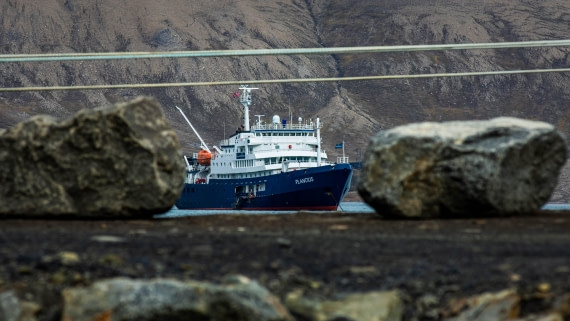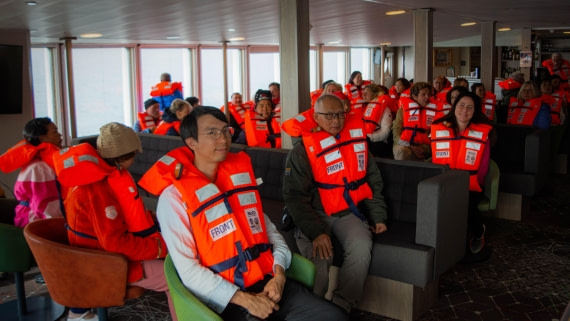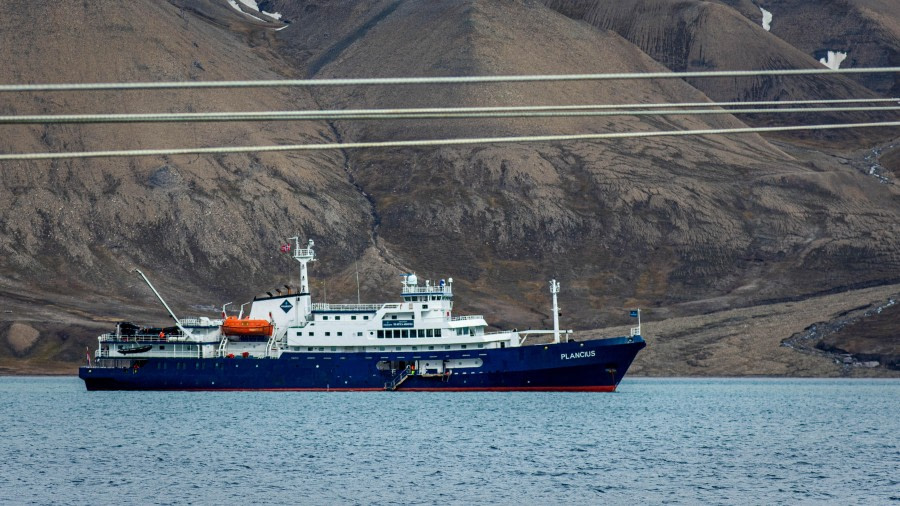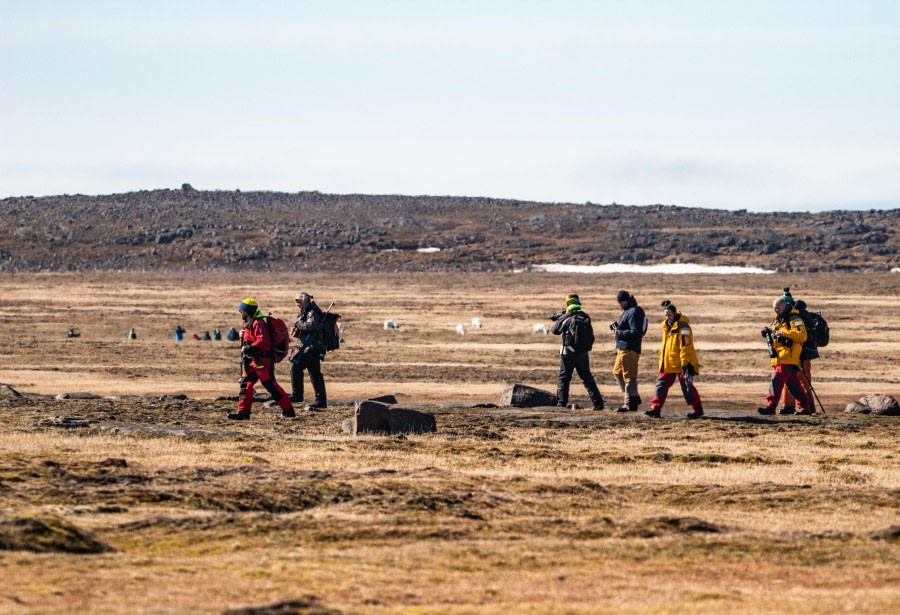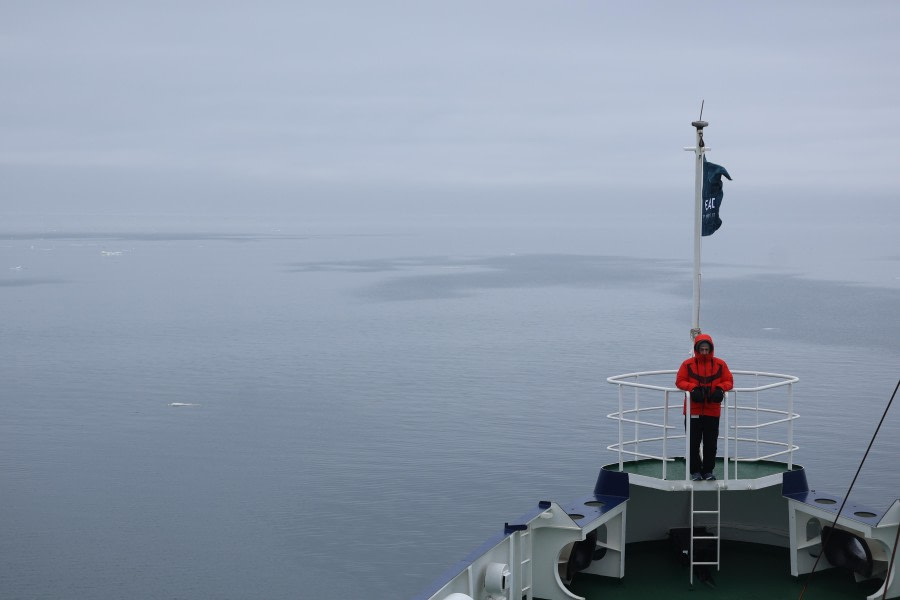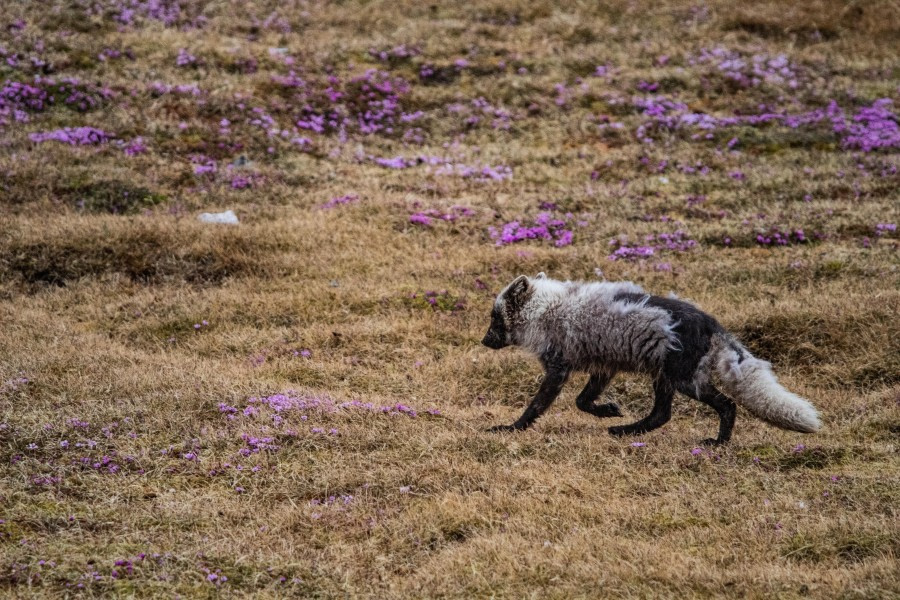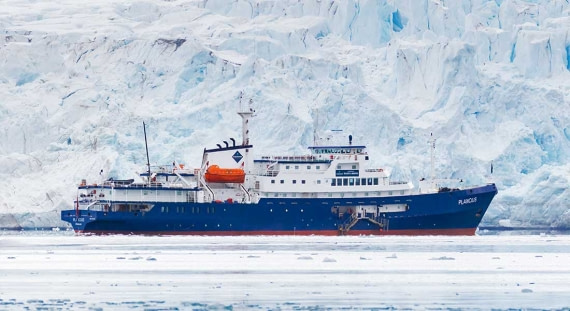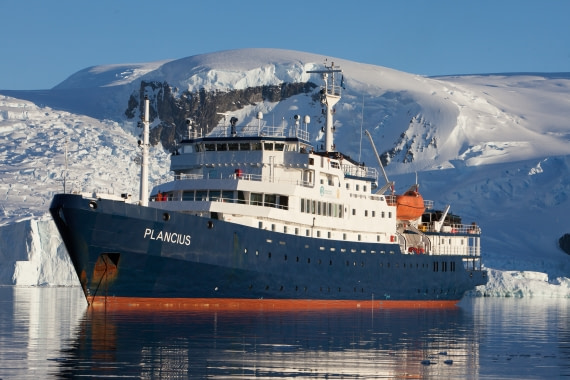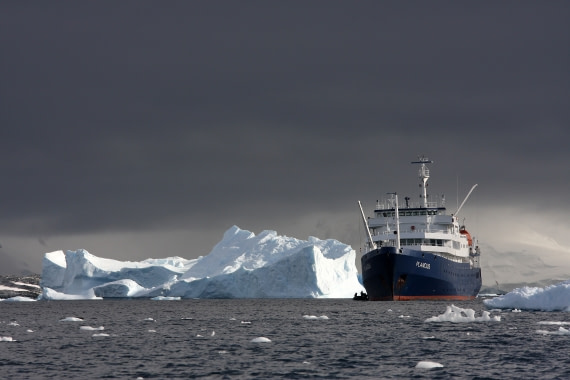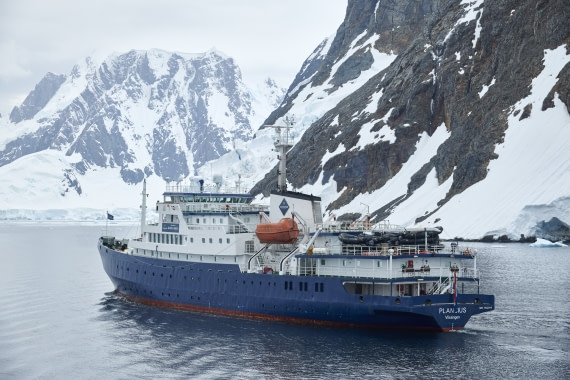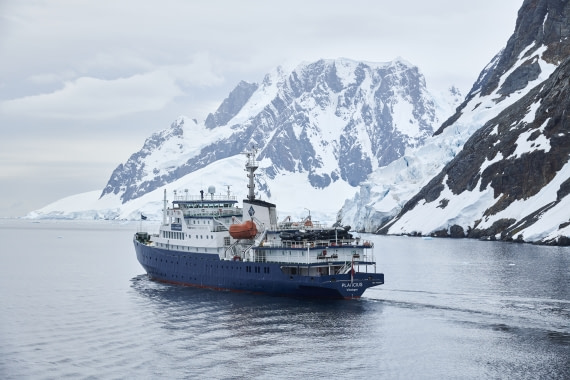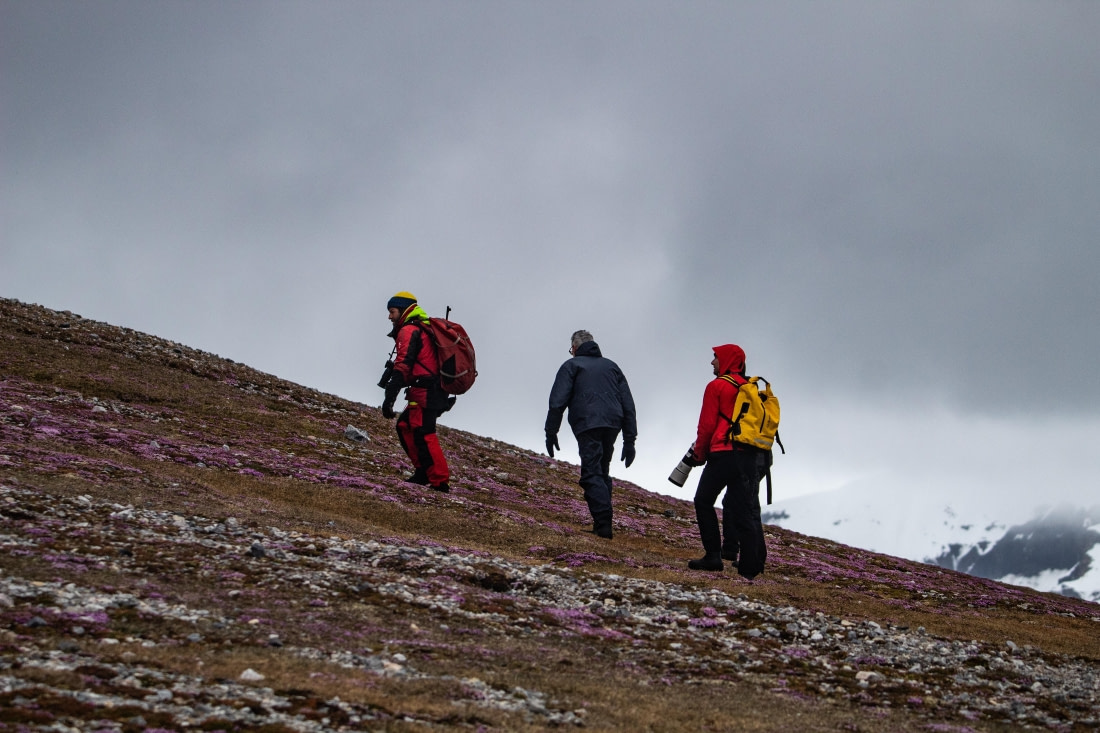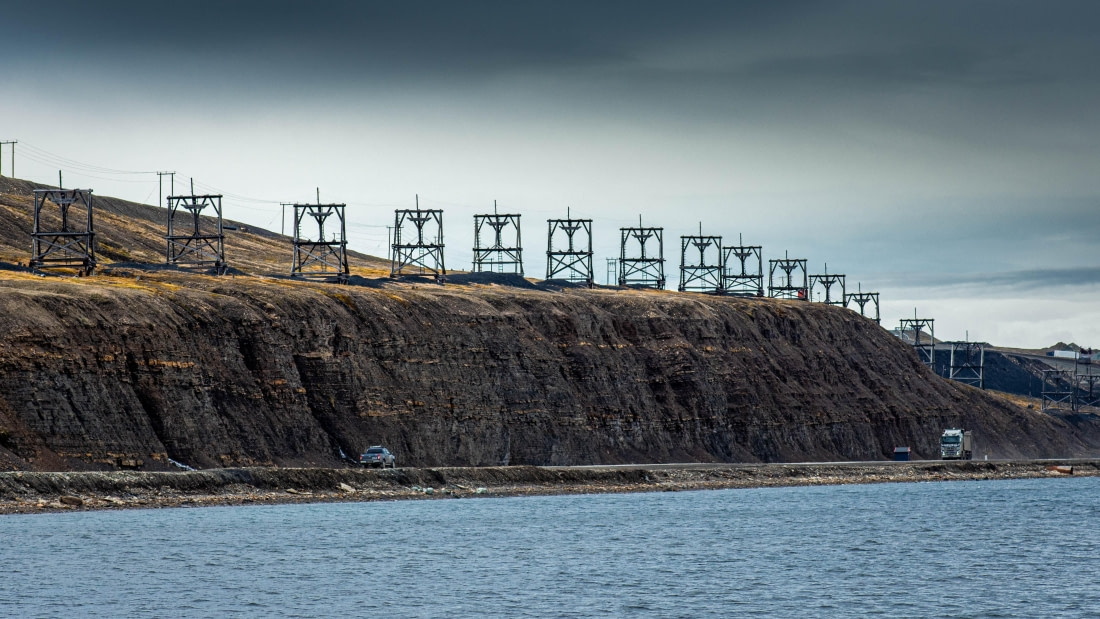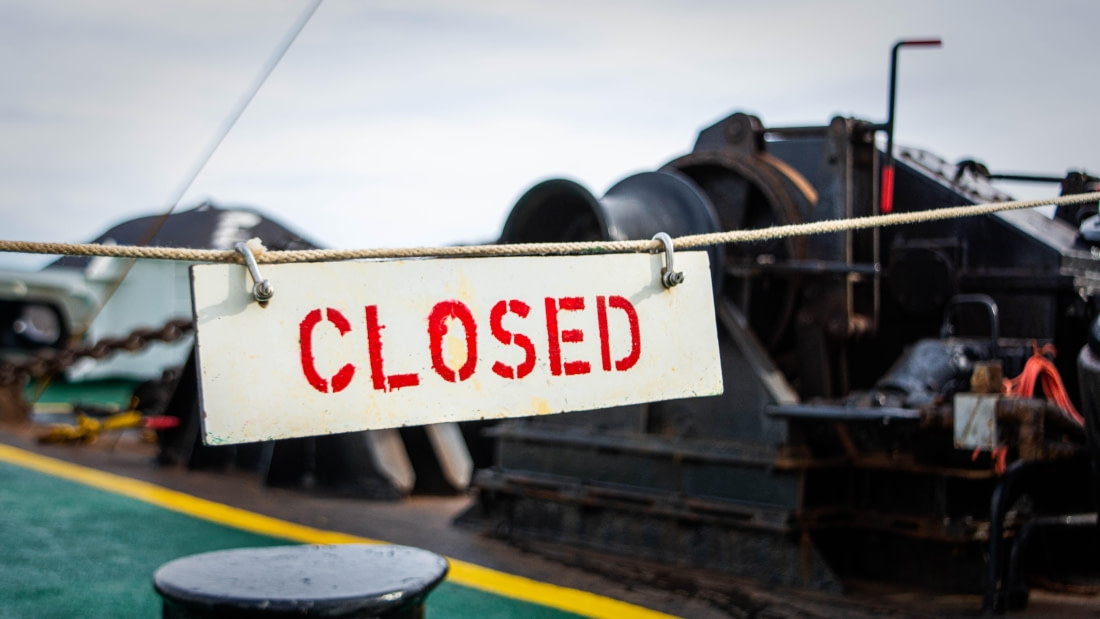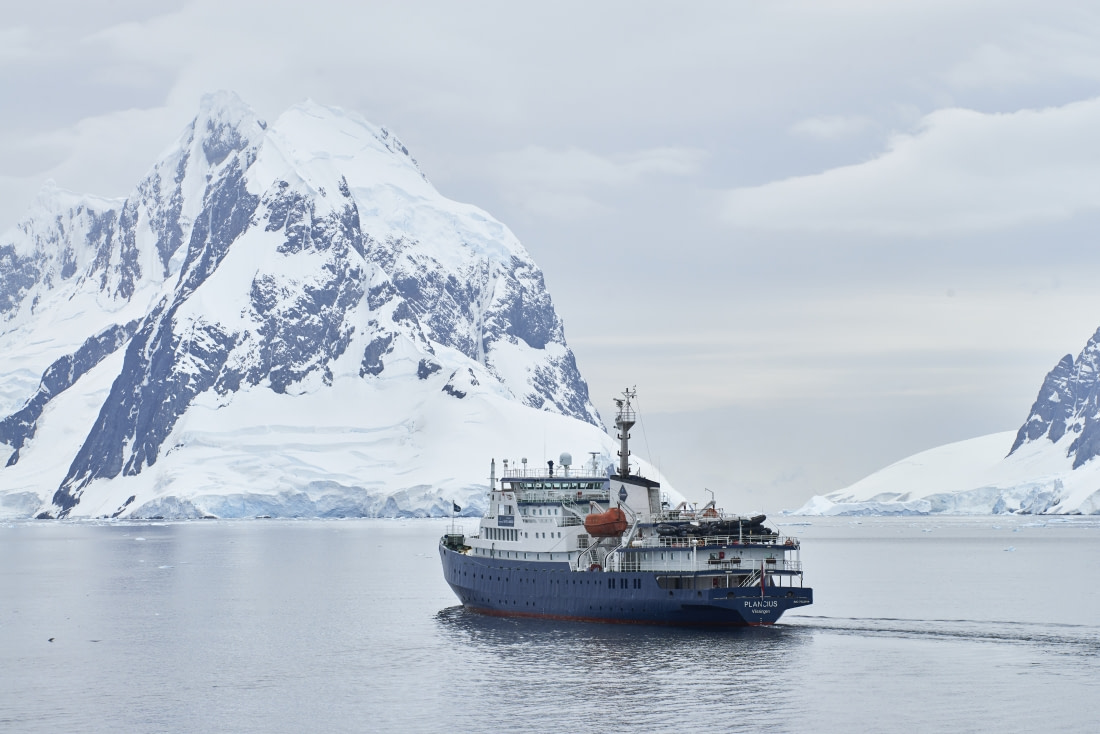| Fecha: | 20.06.2024 |
| Posición: | 78°14.0'N / 015°37.4'E |
| Viento: | SSE3 |
| Clima: | Nublado |
| Temperatura del Aire: | +5 |
¡Hoy es el día! Por fin ha llegado el momento de embarcarnos en nuestra aventura ártica El día se presentaba adecuadamente ártico, con nubes y una fuerte brisa, pero los vendavales de primera hora de la mañana habían amainado. A última hora de la tarde llegamos al muelle donde pudimos ver nuestro barco Plancius, nuestro nuevo hogar para los próximos 8 días, anclado en el puerto. Tuvimos una lanzadera Zodiac extra para comenzar nuestra expedición. A bordo nos registramos todos y fuimos rápidamente acompañados a nuestros respectivos camarotes. Empezamos a explorar el barco y a pasear por las cubiertas disfrutando de las vistas de Longyearbyen.
Una vez a bordo, nos invitaron al salón para participar en una sesión informativa obligatoria y en un simulacro de abandono del buque. Una vez completados los ejercicios obligatorios, llegó el momento de zarpar. A las 18.30 levamos anclas y salimos del puerto.
Mientras la tripulación se aseguraba de que abandonábamos el puerto con tranquilidad, nuestro jefe de expedición, Phillipp, nos invitó al salón para el cóctel del capitán, donde conocimos a nuestro capitán, Ernesto Barria, y al resto del equipo de expedición. Celebramos nuestra expedición con burbujas y canapés antes de que nos llamaran para la última actividad del día: ¡la cena!
Todos nos dirigimos al restaurante para disfrutar de un delicioso bufé y tener la oportunidad de conocer a todos nuestros compañeros de viaje. En este viaje, casi la mitad de nosotros habíamos estado también en el anterior, por lo que las presentaciones fueron mucho más fáciles.
Nuestro día no había terminado aún, ya que después de la cena nos dirigimos a la sala de botas y recogimos nuestras botas de goma, y los caminantes se reunieron en el salón para una sesión informativa introductoria. Estábamos un paso más cerca de comenzar nuestras actividades fuera del barco.
Pasamos el resto de la tarde disfrutando de la larga luz del verano antes de regresar a nuestros camarotes para prepararnos para la aventura de mañana



